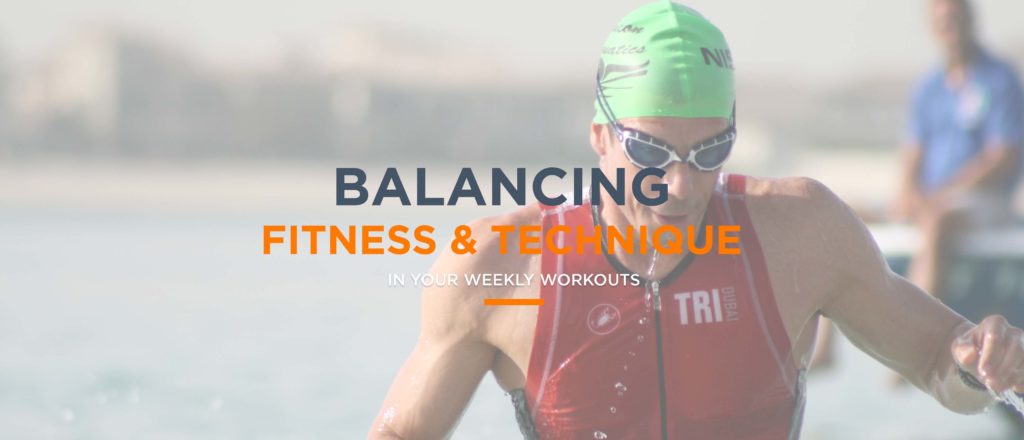Hey Team,
Just because you know how to run doesn’t automatically mean you can wake up and run a marathon.
Just because you know how to ride a bike doesn’t mean you can ride fast and long.
If you want to swim well, you need to be swim fit.
Yes, your technique will set a limit on where you fitness can take you. But if you want to perform well on race day; BE FIT, or suffer.
The question is, what does it really mean to be “Swim Fit”?
In this blog post, I break down the concept of swim fitness into its core components, helping you understand the key elements that contribute to becoming a better and more confident swimmer.
Swim Fitness Defined
At a very basic level swim fitness can be defined as:
The ability to maintain your most efficient form, under strain and fatigue, for the required duration.
This definition may sound straightforward, but let’s delve deeper into its components:
Maintaining Efficient Form
The foundation of swim fitness lies in your ability to swim with good technique. That means minimizing resistance while maximizing propulsion. Good technique is about moving through the water with efficiency, using your body’s muscles and energy resources effectively.
To achieve this, you need to:
- Understand the components of good swimming technique.
- Figure out where you need to make improvements
- Implement the changes, working around limitations like injuries or flexibility issues.
- Consistently repeat until the right habits are formed and good technique becomes second nature.
Building Resistance to Fatigue
Fatigue is an inevitable part of any physical activity, including swimming. To improve your swim fitness, you must train your body to endure and resist fatigue. This involves working on various energy systems through different intensities in your workouts. The goal is to prepare your heart, lungs, muscles, and nervous system to handle increased levels of fatigue.
Why does fatigue matter for swim fitness?
The better your resistance to fatigue, the longer you can maintain excellent form and technique, which is crucial, especially in the early stages of a triathlon race.
Managing Stress in the Water
By stress, I’m referring to the physical and emotional tension that builds up when you face challenging conditions or discomfort in the water. Stressors can include factors like breathlessness, increased lactate levels, rough water, or the presence of other swimmers.
These external variables are a reality of swimming in the open water and it’s where many adult onset swimmers struggle.
If you need to think about all the technical parts of the stroke to swim efficiently, your cognitive capacity for thinking about breathing, jellyfish, rough water, or the presence of other swimmers etc will be diminished.
Until your technique is automatic, you’re either sacrificing technique to focus on the conditions or you’re sacrificing how to best navigate the conditions because you’re focused on technique.
To manage stress in the water, you first need to improve your technique – working towards making an efficient stroke “habitual”. Then you need exposure to progressively challenging situations. By slowly and incrementally pushing your comfort zone, you can acclimate to stressors in the water, making it easier to stay composed and maintain form.
Take Aways
Swim fitness encompasses three key components: maintaining proper technique and form, building resistance to fatigue, and managing stress in the water. These elements work together to make you a faster, more efficient, and more confident swimmer.
While swim fitness may seem like a simple concept, it’s a dynamic and evolving process. As you continue your swimming journey, remember that improvement takes time and consistent effort. Embrace the challenges, seek guidance, and keep progressing.
~ Rory





